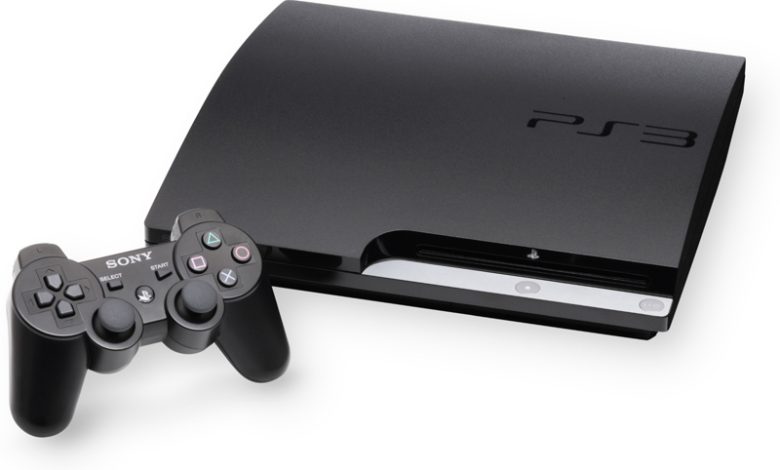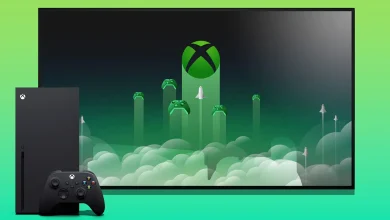PlayStation 3: Revolutionizing Gaming and Entertainment
Revolutionizing Gaming and Entertainment

Introduction:
Released by Sony Computer Entertainment in 2006, the PlayStation 3 (PS3) stands as a milestone in the history of gaming and entertainment. Boasting cutting-edge technology, a diverse library of games, and multimedia capabilities, the PS3 redefined the gaming landscape and solidified Sony’s position as a leading force in the industry. This article explores the impact and legacy of the PlayStation 3, examining its technical innovations, iconic games, and cultural significance.
Technical Innovations:
At its core, the PlayStation 3 was a technological marvel, pushing the boundaries of gaming hardware and multimedia capabilities. It featured a custom-designed Cell microprocessor, developed in collaboration with IBM and Toshiba, which boasted powerful processing capabilities and parallel computing performance. This architecture allowed for stunning graphics, advanced physics simulations, and immersive gameplay experiences that were previously unimaginable. In addition to its CPU, the PlayStation 3 also featured a dedicated Graphics Synthesizer GPU, capable of rendering high-definition graphics and lifelike environments. Its Blu-ray Disc drive not only allowed for larger game installations but also positioned the PS3 as a multimedia powerhouse, capable of playing high-definition movies and streaming content from the internet.
Technical Innovations of the PlayStation 3: Pushing the Boundaries of Gaming Technology
Introduction:
Released in 2006, the PlayStation 3 (PS3) represented a significant leap forward in gaming technology, boasting cutting-edge hardware and innovative features that redefined the gaming experience. From its revolutionary Cell microprocessor to its advanced multimedia capabilities, the PS3 introduced a host of technical innovations that pushed the boundaries of what was possible in gaming. This article explores the key technical innovations of the PlayStation 3 and their impact on the gaming industry.
Cell Broadband Engine:
At the heart of the PlayStation 3’s technological prowess was the Cell Broadband Engine, a revolutionary microprocessor developed in collaboration with IBM and Toshiba. Comprising a central processing unit (CPU) and multiple synergistic processing units (SPUs), the Cell processor offered unparalleled processing power and parallel computing capabilities. The Cell processor’s architecture was designed to handle complex computational tasks efficiently, making it ideal for graphics rendering, physics simulations, and artificial intelligence in games. Its innovative design allowed developers to harness the power of parallel processing, enabling advanced graphical effects, realistic physics simulations, and immersive gameplay experiences.
Blu-ray Disc Drive:
Another groundbreaking feature of the PlayStation 3 was its integrated Blu-ray Disc drive, which marked a significant departure from the DVD-based media used in previous gaming consoles. Blu-ray Discs offered significantly higher storage capacity compared to DVDs, allowing for larger game installations, higher-quality audio and video, and more expansive game worlds. The inclusion of a Blu-ray Disc drive not only enhanced the gaming experience but also positioned the PS3 as a versatile multimedia device capable of playing high-definition movies, streaming content from the internet, and storing digital media. This integration of Blu-ray technology into the PS3 contributed to the widespread adoption of Blu-ray as the standard for high-definition optical media.
Graphics Processing Power:
The PlayStation 3’s graphics processing capabilities were equally impressive, thanks to its dedicated Graphics Synthesizer unit. The GPU was capable of rendering high-definition graphics with stunning detail, realistic lighting, and smooth frame rates, immersing players in visually breathtaking game worlds. Furthermore, the PS3 supported advanced graphical features such as high dynamic range (HDR) rendering, anti-aliasing, and real-time physics simulations, allowing developers to create visually stunning and immersive gaming experiences. Games like “Uncharted 2: Among Thieves,” “The Last of Us,” and “Metal Gear Solid 4: Guns of the Patriots” showcased the graphical prowess of the PS3 and raised the bar for visual fidelity in gaming.
Multimedia and Online Capabilities:
In addition to its gaming capabilities, the PlayStation 3 offered a wide range of multimedia and online features that further enhanced its appeal. The console featured built-in Wi-Fi connectivity, enabling players to connect to the internet wirelessly and access online multiplayer gaming, digital content, and social features. The PlayStation Network (PSN) provided a platform for digital distribution, online multiplayer gaming, and social networking, allowing players to download games, connect with friends, and participate in online communities. Moreover, the PS3 supported multimedia playback, including high-definition movies, music, and photos, turning it into a versatile home entertainment device.
Conclusion:
In conclusion, the PlayStation 3 introduced a host of technical innovations that revolutionized the gaming industry and redefined the gaming experience. From its groundbreaking Cell Broadband Engine and Blu-ray Disc drive to its powerful graphics processing capabilities and multimedia features, the PS3 pushed the boundaries of gaming technology and set new standards for performance, immersion, and versatility. Its legacy continues to influence the gaming industry and inspire future generations of gaming hardware and software developers.
Multimedia Capabilities:
One of the defining features of the PlayStation 3 was its extensive multimedia capabilities, which extended beyond gaming to encompass movies, music, and online content. The inclusion of a Blu-ray Disc drive positioned the PS3 as a leading home entertainment device, allowing users to watch high-definition movies and television shows with superior audio and visual quality. Moreover, the PlayStation Network (PSN) offered a wide range of digital content, including downloadable games, movies, TV shows, and music. The introduction of services like PlayStation Store and PlayStation Plus provided players with access to a vast library of digital content and exclusive discounts, further enhancing the value proposition of the PS3 as a multimedia hub.
Expanding Horizons: The Multimedia Capabilities in Gaming
Introduction:
Gaming has evolved far beyond its origins as simple electronic diversions, now encompassing a rich tapestry of multimedia experiences that transcend traditional boundaries. Today’s gaming platforms offer a diverse array of multimedia capabilities, allowing players to not only immerse themselves in interactive gameplay but also enjoy high-definition movies, music, and streaming content. This article explores the multifaceted world of multimedia capabilities in gaming, examining the technological advancements, cultural impact, and entertainment possibilities that have transformed the gaming landscape.
Evolution of Multimedia in Gaming:
The integration of multimedia capabilities into gaming platforms has been a gradual evolution, driven by advancements in technology and the changing preferences of players. Early gaming consoles, such as the PlayStation and Sega Saturn, introduced basic multimedia features like CD playback and audio CDs, expanding the entertainment possibilities beyond gaming. As technology advanced, subsequent generations of gaming platforms embraced multimedia capabilities with greater sophistication. Consoles like the PlayStation 2 and Xbox introduced DVD playback, allowing players to enjoy movies and television shows on their gaming systems. This convergence of gaming and multimedia laid the groundwork for the multimedia-rich experiences that define modern gaming.
Integration of High-Definition Media:
One of the most significant advancements in multimedia capabilities in gaming was the transition to high-definition (HD) media formats. The introduction of Blu-ray Disc technology revolutionized the gaming industry, offering higher storage capacity and superior audiovisual quality compared to traditional DVDs. Consoles like the PlayStation 3 and Xbox 360 embraced Blu-ray Disc technology, allowing players to experience games, movies, and other multimedia content in stunning high-definition. This shift to HD media not only enhanced the visual and audio fidelity of gaming experiences but also positioned gaming consoles as versatile home entertainment hubs capable of delivering immersive multimedia experiences.
Streaming Services and Digital Distribution:
The rise of streaming services and digital distribution platforms has further expanded the multimedia capabilities of gaming platforms. Services like Netflix, Hulu, and Amazon Prime Video offer a vast library of movies, TV shows, and original content that players can access directly from their gaming consoles. Moreover, gaming platforms have integrated digital distribution services like PlayStation Store, Xbox Live Marketplace, and Nintendo eShop, allowing players to purchase and download games, movies, music, and other digital content directly to their consoles. This shift towards digital distribution has streamlined the process of accessing multimedia content, offering greater convenience and flexibility to players.
Integration of Social Media and Online Connectivity:
In addition to traditional multimedia content, gaming platforms have embraced social media integration and online connectivity, enabling players to engage with friends, share content, and stream gameplay experiences. Features like Share button on PlayStation controllers and Xbox Game Bar on Windows 10 PCs allow players to capture and share screenshots, video clips, and live streams directly from their gaming consoles. Furthermore, gaming platforms have integrated social media platforms like Facebook, Twitter, and Twitch, allowing players to connect with friends, join communities, and participate in online multiplayer gaming and esports events. This seamless integration of social media and online connectivity enhances the social aspect of gaming, fostering community engagement and collaboration among players.
The Impact of Virtual Reality and Augmented Reality:
The emergence of virtual reality (VR) and augmented reality (AR) technologies has introduced new dimensions to multimedia capabilities in gaming. VR headsets like the Oculus Rift, HTC Vive, and PlayStation VR transport players to immersive virtual worlds, where they can interact with environments and objects in three-dimensional space.Similarly, AR devices like Microsoft HoloLens and mobile AR apps like Pokémon GO blend digital content with the real world, allowing players to experience interactive gaming experiences in their everyday surroundings. These technologies offer new opportunities for immersive storytelling, creative expression, and interactive entertainment, further expanding the possibilities of multimedia in gaming.
Conclusion:
In conclusion, multimedia capabilities have become an integral part of the gaming experience, enriching gameplay and entertainment possibilities in ways previously unimaginable. From high-definition media playback and streaming services to social media integration and virtual reality experiences, gaming platforms offer a diverse array of multimedia features that cater to the preferences and interests of players worldwide. As technology continues to advance and evolve, the future of multimedia in gaming holds endless possibilities, promising new innovations, experiences, and entertainment avenues for players to explore.
Iconic Games and Exclusives:
The PlayStation 3 boasted a diverse library of games, ranging from blockbuster AAA titles to indie gems and exclusive franchises. Iconic games like “Uncharted 2: Among Thieves,” “The Last of Us,” and “God of War III” pushed the boundaries of storytelling, gameplay, and graphical fidelity, earning critical acclaim and commercial success. Moreover, the PS3 was home to a number of exclusive franchises that became synonymous with the PlayStation brand. Titles like “Gran Turismo,” “LittleBigPlanet,” and “Metal Gear Solid 4: Guns of the Patriots” showcased the technical prowess of the PS3 and demonstrated the platform’s ability to deliver immersive and memorable gaming experiences.
Iconic Games and Exclusives: Shaping the Landscape of Gaming
Introduction:
In the rich tapestry of gaming history, certain titles stand out as iconic landmarks that have shaped the industry and captivated players worldwide. From groundbreaking innovations to unforgettable characters and narratives, these games have left an indelible mark on gaming culture and continue to influence the way we play and experience games. This article delves into the realm of iconic games and exclusives, exploring the impact of these titles on the gaming landscape and the enduring legacy they have left behind.
Defining Iconic Games:
Iconic games are those that transcend their status as mere entertainment and become cultural phenomena, leaving a lasting impact on players and the gaming industry as a whole. These games often introduce groundbreaking innovations, push the boundaries of technology and storytelling, and resonate with players on a deep emotional level. Moreover, iconic games often spawn franchises, sequels, and spin-offs that further cement their place in gaming history, creating a legacy that extends far beyond their initial release. Whether through innovative gameplay mechanics, memorable characters, or immersive narratives, iconic games leave an indelible mark on the hearts and minds of players, shaping their gaming experiences and influencing future generations of game developers.
The Power of Exclusives:
Exclusives, on the other hand, are games that are released exclusively on a particular platform, such as a console or PC storefront. These games are often developed by first-party studios or third-party developers in collaboration with platform holders, leveraging the unique capabilities and features of the platform to deliver unparalleled gaming experiences. Exclusives play a crucial role in shaping the identity and appeal of gaming platforms, serving as system sellers that attract players to a particular platform. These games often showcase the technical prowess of the platform, harnessing its hardware capabilities to deliver stunning graphics, immersive gameplay, and innovative features that set them apart from multiplatform titles. Moreover, exclusives foster a sense of loyalty and community among players, as they become emblematic of the platform they are associated with. Whether it’s the iconic characters of Nintendo’s first-party titles, the cinematic storytelling of Sony’s PlayStation exclusives, or the immersive worlds of Microsoft’s Xbox franchises, exclusives play a pivotal role in defining the identity and success of gaming platforms.
Examples of Iconic Games and Exclusives:
Several games have achieved iconic status over the years, leaving an indelible mark on gaming culture and influencing the industry in profound ways. From classic titles like “Super Mario Bros.,””The Legend of Zelda,” and””Tetris ” to modern masterpieces like “The Last of Us,” “Halo,” and “The Witcher 3: Wild Hunt,” iconic games come in all shapes and sizes, spanning genres, platforms, and generations. Similarly, exclusives have played a pivotal role in shaping the success of gaming platforms and driving innovation within the industry. Nintendo’s iconic franchises like “Super Mario,” “The Legend of Zelda,” and “Pokémon” have been instrumental in the success of its consoles, while Sony’s PlayStation exclusives like “Uncharted,” “God of War,” and “Bloodborne” have set new standards for storytelling and cinematic gameplay experiences.
Conclusion:
In conclusion, iconic games and exclusives play a crucial role in shaping the landscape of gaming, driving innovation, inspiring creativity, and captivating players worldwide. Whether through groundbreaking innovations, unforgettable characters, or immersive narratives, these games leave an indelible mark on gaming culture and continue to influence the way we play and experience games. As the industry continues to evolve and expand, iconic games and exclusives will remain a cornerstone of gaming culture, defining the identity of platforms and shaping the future of interactive entertainment.
Cultural Impact and Legacy:
The PlayStation 3 left a lasting impact on gaming culture and entertainment, shaping the way we play, consume, and interact with digital media. Its technological innovations set new standards for gaming hardware, paving the way for future advancements in graphics, processing power, and multimedia capabilities. Moreover, the PlayStation 3’s extensive library of games and multimedia content helped popularize digital distribution and online gaming, laying the groundwork for the digital-first approach embraced by subsequent gaming platforms. Its legacy lives on in the PlayStation 4 and PlayStation 5, which continue to build upon the foundation laid by the PS3 and push the boundaries of gaming and entertainment.
Gaming’s Cultural Impact and Enduring Legacy: Shaping Society Through Play
Introduction:
Gaming has transcended its origins as a mere form of entertainment to become a cultural force that permeates every aspect of modern society. From the early days of arcade cabinets to the immersive virtual worlds of modern consoles, gaming has left an indelible mark on popular culture, art, music, fashion, and technology. This article explores the profound cultural impact and enduring legacy of gaming, examining its influence on society and the way we interact, communicate, and perceive the world around us.
Cultural Impact of Gaming:
The cultural impact of gaming is vast and multifaceted, touching every aspect of modern society. Gaming has evolved from a niche hobby to a mainstream form of entertainment, reaching audiences of all ages and backgrounds. It has become a universal language that transcends geographical boundaries, connecting players from around the world through shared experiences and shared passion for gaming.Moreover, gaming has inspired creativity and innovation in other forms of media, including film, television, music, and literature. Iconic characters like Mario, Sonic, and Lara Croft have become cultural icons, influencing popular culture and inspiring generations of artists, writers, and designers. Gaming has also had a significant impact on technology and innovation, driving advancements in graphics, artificial intelligence, virtual reality, and networking technology. The gaming industry’s relentless pursuit of innovation has pushed the boundaries of what is possible and inspired new forms of interactive entertainment that blur the lines between reality and fiction. Furthermore, gaming has fostered new forms of social interaction and community engagement, bringing players together in virtual worlds where they can connect, collaborate, and compete. Online gaming communities, streaming platforms, and esports events have become hubs of social activity, fostering friendships, and building communities around shared interests and passions.
Legacy of Gaming:
The legacy of gaming is one of innovation, creativity, and cultural influence that continues to shape the world we live in today. Gaming has left an indelible mark on popular culture, inspiring movies, television shows, music videos, and fashion trends. It has introduced new forms of storytelling, interactive narrative, and immersive gameplay experiences that have redefined the way we consume media and engage with entertainment. Moreover, gaming has inspired new generations of creators, innovators, and entrepreneurs to push the boundaries of what is possible and explore new frontiers of interactive entertainment. From indie developers to AAA studios, the gaming industry continues to evolve and innovate, driven by a passion for creativity, storytelling, and immersive experiences. The legacy of gaming is also one of inclusivity and diversity, as gaming has become a platform for marginalized voices and underrepresented communities to share their stories and experiences. Games like “Gone Home,” “Life is Strange,” and “The Last of Us Part II” have tackled themes of identity, sexuality, and mental health with sensitivity and empathy, opening up important conversations and challenging societal norms.
Conclusion:
In conclusion, gaming’s cultural impact and legacy are profound and far-reaching, touching every aspect of modern society. From its influence on popular culture and technology to its role in fostering social interaction and community engagement, gaming has become an integral part of our lives. As we look towards the future, one thing is certain: the cultural impact and legacy of gaming will continue to evolve and inspire new generations of creators, innovators, and players for years to come. The PlayStation 3 stands as a testament to Sony’s commitment to innovation and excellence in gaming and entertainment. Its technical innovations, diverse library of games, and multimedia capabilities redefined the gaming landscape and solidified Sony’s position as a leader in the industry. As we look back on the legacy of the PlayStation 3, we are reminded of its lasting impact on gaming culture and its role in shaping the future of interactive entertainment.
Introduction to PlayStation 3
The PlayStation 3, commonly known as the PS3, is a gaming console that revolutionized the gaming industry when it was released in 2006. Developed by Sony, the PS3 offers a wide range of features and capabilities that make it the ultimate console for gamers. In this comprehensive guide, I will take you through everything you need to know about gaming on the PlayStation 3, from its hardware specifications to tips and tricks for optimizing your gaming experience.
The hardware specifications of PlayStation 3
The PlayStation 3 boasts impressive hardware specifications that contribute to its powerful performance. It is equipped with a Cell Broadband Engine, which consists of a central processing unit (CPU) and multiple co-processors. This architecture allows the PS3 to handle complex graphics and AI processing with ease. Additionally, the console features a dedicated graphics processing unit (GPU) that delivers stunning visuals and realistic graphics. In terms of storage, the PS3 comes with various options. The original model offers a 20GB or 60GB hard drive, while later models have expanded storage capacities of 80GB, 120GB, 160GB, or 320GB. The larger storage options are particularly useful for gamers who like to download games and store their game saves and multimedia content on the console.
Understanding the PlayStation 3 user interface
The PlayStation 3 user interface, also known as the XrossMediaBar (XMB), is a sleek and intuitive interface that allows you to navigate through the console’s features and settings. The XMB is divided into several categories, including Games, Video, Music, Photos, and Settings. Each category provides access to different functions and content.
To navigate the XMB, you can use the PS3 controller’s directional buttons and the X button to select options. The left and right buttons allow you to scroll through the different categories, while the up and down buttons enable you to navigate within a category. Additionally, the PS button in the center of the controller serves as a quick shortcut to the main menu.
Setting up your PlayStation 3 console
Setting up your PlayStation 3 console is a straightforward process. First, ensure that you have all the necessary cables, including the power cable, HDMI or AV cable, and controller charging cable. Connect the power cable to the console and plug it into a power outlet. Then, connect the HDMI or AV cable to your TV or monitor and the corresponding port on the console. Finally, connect the controller charging cable to the console and the controller itself to charge it. Once the cables are connected, turn on the console by pressing the power button located at the front of the console. Follow the on-screen instructions to complete the initial setup, including selecting your language, connecting to the internet, and signing in to your PlayStation Network (PSN) account. Setting up a PSN account is essential for accessing online features, such as multiplayer gaming and the PlayStation Store.
Getting started with gaming on PlayStation 3
Now that your PlayStation 3 console is set up, it’s time to dive into the world of gaming. The PS3 offers a vast library of games, ranging from action-packed adventures to immersive role-playing experiences. To play a game, insert the game disc into the disc drive of your console. The game will automatically start, and you can follow the on-screen prompts to begin your gaming journey. Alternatively, you can also download games directly from the PlayStation Store. The PlayStation Store is an online marketplace where you can purchase and download games, demos, and additional content for your games. To access the PlayStation Store, navigate to the Store category on the XMB and select it. From there, you can browse through the available games and download them to your console.
Exploring the PlayStation Store and downloading games
The PlayStation Store is a treasure trove of gaming content, offering a wide variety of games, add-ons, and multimedia content. To explore the PlayStation Store, select the Store category on the XMB. You can then browse through the different sections, such as Featured, New Releases, and Top Downloads, to discover new games and content. Additionally, you can search for specific games or browse through the different genres to find games that suit your preferences. To download a game or other content from the PlayStation Store, select the item you want to download and choose the option to download or purchase it. If the item is free, it will start downloading immediately. If it is a paid item, you will need to complete the purchase using your PSN wallet funds or a credit card linked to your account. Once the download is complete, the game or content will be available to play or use on your console.
Multiplayer gaming on PlayStation 3
One of the standout features of the PlayStation 3 is its robust multiplayer capabilities. Whether you want to team up with friends or compete against players from around the world, the PS3 offers a variety of multiplayer options. To play multiplayer games, you will need a stable internet connection and a PlayStation Network account. There are several ways to enjoy multiplayer gaming on the PS3. You can invite friends to join your game session, participate in online tournaments, or join multiplayer lobbies to find opponents. Additionally, some games offer split-screen multiplayer, allowing you to play with friends on the same console.
Conclusion
The PlayStation 3 is a gaming console that offers a world of entertainment and immersive gaming experiences. With its powerful hardware, intuitive user interface, and extensive library of games, the PS3 is the ultimate console for gamers. By following the tips and tricks outlined in this comprehensive guide, you can unleash the full potential of your PlayStation 3 and take your gaming experience to new heights.
Call to Action
Start your gaming journey on the PlayStation 3 today and discover the endless possibilities of this ultimate console. Whether you’re a casual gamer or a hardcore gaming enthusiast, the PS3 has something for everyone. So grab your controller, power up your console, and embark on an unforgettable gaming adventure with the PlayStation 3.











